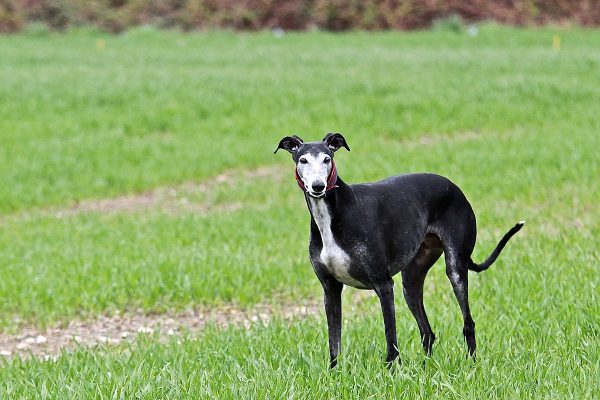Galgo Español
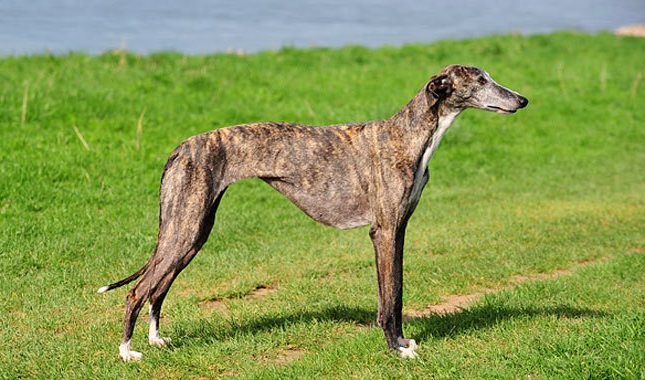
You might assume that the Galgo Español is hyperactive, but that’s not entirely true. The Galgo is a typical greyhound: quiet and calm at home, always affectionate with her family. If you give her a long walk or a good run, she will happily spend the rest of her time lounging on the couch. You may be surprised because the dog is energetic and agile outdoors, but at home, he’s restrained.
Table of Contents
Breed Information
| Another Name | Spanish Galgo, Spanish Greyhound |
| Origin | Spain |
| Height | Males 62-70 cm Females 60-68 cm |
| Weight | Males 25-30 kg Females 20-25 kg |
| Fur | Short and thick |
| Color | Pele, black, light brown, tiger |
| Lifespan | 12-15 years |
| FCI Classification | Sighthounds |
| Group | Hunting dogs |
| Price | $400-500 |
Breed Photos
Origin History
The Galgo Español breed origin, also known as the Spanish Greyhound, goes deep into history. A distant relative of the dogs is the Asian greyhound. The Galgo Español was brought to the Iberian Peninsula by the Celtic tribe Gallo in the 6th century BC. The breed is named after the first owners of the dogs. The Romans continued the traditional use of these hunting dogs during their reign until the fifth century AD. Later, from the eighth to the fifteenth century, the Galgo Español was a Moors’ favorite.
In the Middle Ages in Spain, the Galgo was highly prized by people from all society’s hierarchical strata. Initially, the Galgo Español belonged only to the nobility, but later they were found in the provincial villages. It was a great advantage for the peasants because only the aristocracy could have a greyhound in England. In the seventeenth and eighteenth centuries, the Spanish Greyhound was exported to Ireland and England, where they ran and hunted dogs. Because of its keen sense of smell and fast speed, the Galgo Español was involved in hunting hare, fox, and hog.
Today in Spain, the Galgo is used as a “sport hunter” for trophies. They are bred in large numbers to get the strongest and fastest dog. All those that do not fit the necessary criteria or have already fulfilled their sporting “mission” are destroyed. And the Spaniards do it too brutally: shooting, hanging, throwing off cliffs. It is estimated that every year from 40,000 to 60,000 Galgos are thrown into the street or killed. Unthinkable, because just a few centuries ago, these dogs were revered and respected in their state. However, Spanish volunteers are doing their best to stop this process.
Appearance
The Galgo Español is a medium-sized dog, very similar in appearance to the greyhound, but there are certain differences. The dog is fairly lean, but the subcutaneous fat layer is still present, though not strongly pronounced. The coat is of varied color due to the historically large number of crosses.
The dog’s shoulders are lower than the loin, giving the impression that the dog has a hump on its back. The Spanish Greyhound limbs are long and thin, similar to the cat’s, which allows the dog to get excellent results in running. The dog’s muzzle is narrow and sharp, with no noticeable transition from forehead to nose. The eyes are almond-shaped, all shades of brown. Ears are small, pulled back along the neck.
Character
You might assume that the Galgo Español is hyperactive, but that’s not entirely true. The Galgo is a typical greyhound: quiet and calm at home, always affectionate with her family. If you give her a long walk or a good run, she will happily spend the rest of her time lounging on the couch. You may be surprised because the dog is energetic and agile outdoors, but at home, he’s restrained.
The Spanish Greyhound loves its family: it feels great affection for its owners. It has a positive attitude to children, although sometimes it may feel stressed and irritated by the baby’s loud crying and sudden movements. Galgo Español puppies can be naughty and naughty at home: they are likely to spoil your things.
You should not hit your pet – they should immediately be told “no” in a menacing tone. If puppies are suppressed and humiliated from an early age, it can negatively affect future dog behavior. The Galgo Español can be shy, so socialization should be started as early as possible.
Care
When it comes to grooming, you can use a brush to remove dead hairs. Daily brushing is important because greyhounds are prone to periodontal disease as they age. The dog should be bathed occasionally or as needed. Paws are a problem area for the Galgo Español, so checking between the pads and claw trimming should be part of the routine.
The best place to live for the Galgo Español would be a private home with a huge area. Keeping a dog in an apartment will be difficult, especially if special training is not carried out regularly. The house must have a high fence because hunting instincts never fail: the dog will chase the neighbor’s cats.
Training
Training the Galgo Español is difficult, given that the dog must first become accustomed to and respect its owner. If you educate the Spanish Greyhound using physical force, it will not lead to good results. You will only alienate the dog from you. On the contrary, it is best to encourage the dog with treats; then, your pet will willingly learn.
Common Diseases
In general, the Galgo Español has good health. The dog can suffer muscle and finger injuries while running. The most common disease to which the Galgo Español breed is prone is osteosarcoma or bone cancer. The dog is also more susceptible to certain anesthetics than other breeds. Galgos are prone to hypothermia because of their low body fat reserves.
Nutrition
The nutrition of the Galgo Español should be balanced and rich in nutrients. When buying dry food, give preference to premium manufacturers. Galgo like bones, allowed to be given once a week, except for chicken bones.
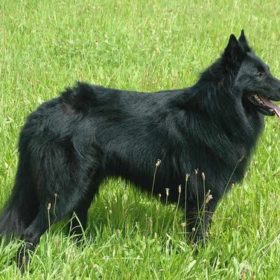 Belgian Shepherd Groenendael
Belgian Shepherd Groenendael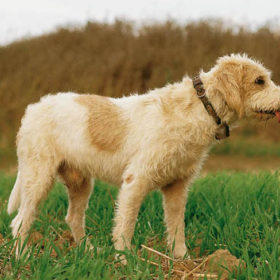 Grand Griffon Vendéen
Grand Griffon Vendéen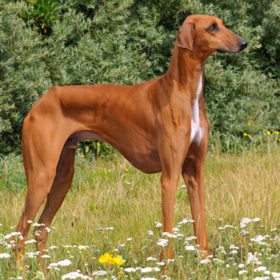 Azawakh
Azawakh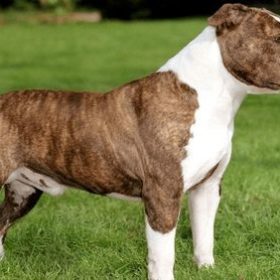 American Staffordshire Terrier
American Staffordshire Terrier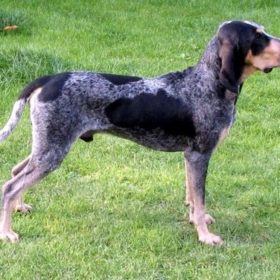 Grand Bleu de Gascogne
Grand Bleu de Gascogne Kai Ken
Kai Ken

